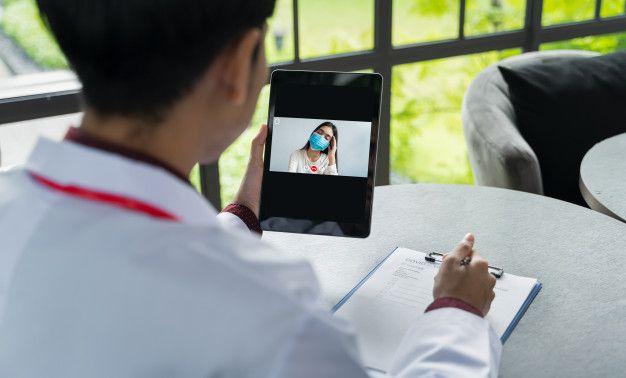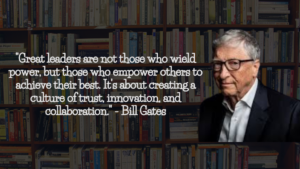
Healthcare today is not just about treatment but the entire experience, including pre and post-treatment care. As the world moves forward towards digitisation, the global healthcare sector is becoming an interconnected ecosystem. Traditionally, patient engagement relied heavily on face-to-face interactions with healthcare providers. However, with the advent of technology and enhanced communication channels, this has changed drastically. Everything today is just a click away.
The Digital Healthcare Revolution
The integration of technology in healthcare has revolutionised patient engagement in myriad ways. From telemedicine platforms enabling remote consultations to mobile health applications facilitating real-time monitoring, the digital era has transcended the barriers of time and distance.
Leveraging technology and effective communication channels has emerged as a pivotal strategy in this digital healthcare revolution. For instance, the advent of telemedicine has revolutionised healthcare accessibility. Tele-ICU, teleradiology, and other similar solutions provide patients with round-the-clock access to medical expertise, irrespective of geographical constraints. This not only ensures timely interventions but also fosters a sense of security and continuity of care.
Moreover, platforms facilitating doctor-to-doctor connections facilitate seamless collaboration and knowledge sharing, ultimately benefiting patient outcomes. This is especially beneficial in the consultation phase. The mere fact that patients can now connect with doctors worldwide from the comfort of their own homes has enhanced patient engagement multifold.
In 2019, the telemedicine market size in India was almost $830 million versus $647 million the year before. Since 2010, the telemedicine market size in the country has seen a gradual increase and is expected to grow at a compound annual growth rate (CAGR) of 31% from 2020 to 2025.
.thumbnailWrapper{
width:6.62rem !important;
}
.alsoReadTitleImage{
min-width: 81px !important;
min-height: 81px !important;
}
.alsoReadMainTitleText{
font-size: 14px !important;
line-height: 20px !important;
}
.alsoReadHeadText{
font-size: 24px !important;
line-height: 20px !important;
}
}

The Rise of the ‘Patient’s Journey’
We are living in an age where information is easily accessible. Therefore, there is no reason why patients shouldn’t be kept informed of their healthcare journey. Empowering patients with access to their health information fosters a sense of ownership and accountability for their well-being. This approach ensures that by maintaining open communication channels with the patients, healthcare providers can help them make informed decisions about their healthcare journey.
Technology and communication have made it possible for healthcare providers to chart out a patient’s entire healthcare journey. They understand that treatment, whether domestic or overseas, goes beyond logistics. It is about providing compassionate care and support to the patients from the moment they reach out to them.
Qualified and trained patient experience staff who excel in patient-provider communication skills, exhibit key behavioural traits such as compassion and excellence and include native language experts for seamless communication have become key to positive patient engagement.
Throughout the patient journey, healthcare providers now strive to win patient loyalty by providing personalised services and support. From treatment plans and cost comparisons to assisting with visa invitation letters, tickets, and hotel bookings, they handle every aspect of the process with utmost care and attention to detail thanks to technology.
Services like dedicated Guest Relationship Officers (GREs) ensure a smooth transition by facilitating pick-up from the airport, assisting with registration at the hospital, and arranging local communication tools for easy access.
Furthermore, commitment and communication don’t end with the treatment process. The healthcare providers must provide ongoing medical and financial counselling, regular updates to the patient’s family, and support throughout the recovery journey.
Personalized Communication for Improved Outcomes
Tailoring communication channels and messages to individual preferences enhances patient understanding and compliance with treatment plans. Personalised communication strategies, such as interactive text message reminders and patient-specific educational materials, can result in higher engagement levels and improved health outcomes among participants. For instance:
- Client Support: Empowering patients with tools to navigate their healthcare journey is paramount. From sharing treatment plans to facilitating virtual consultations, technology bridges the gap between patients and healthcare providers. Identifying the best doctor and hospital becomes more transparent, while regular updates on medical and financial aspects instil confidence and clarity. This proactive approach enhances patient autonomy and decision-making.
- Postoperative Care: The continuum of care extends beyond hospital walls, especially in the realm of postoperative recovery. Collaborations with local hospitals and doctors ensure a smooth transition for patients, with the aid of follow-up virtual consultations and diligent tracking of regimen changes. This holistic, open communication approach promotes recovery and minimises complications, reinforcing patient trust and satisfaction.

Achieving Operational Efficiency with Technology
We live in the era of the global healthcare ecosystem. Technology is now making it possible to raise the level of healthcare in even the remote corners of the world. For instance, technology is making healthcare partnerships possible, ensuring that knowledge is shared. Embracing technological advancements to analyse feasibility, training, and scalability is helping build solutions without compromising quality.
In addition to this, technology is also helping streamline internal processes to optimise resource allocation and service delivery. Maximising equipment utilisation and optimising staffing contribute to operational efficiency, which ultimately benefit patient care. By eliminating redundancies and enhancing workflow dynamics, healthcare providers can allocate more time and resources to patient-centric activities.
Besides this, technology is also helping enhance cross-border healthcare. Offering international treatment options broadens the horizons for patients, facilitated by comprehensive support services. From visa assistance to travel arrangements, the focus is on delivering quality care while mitigating logistical challenges. This expansion of healthcare horizons is only possible due to technology and communication.
Realising the full potential of technology and communication in enhancing patient engagement necessitates collaborative efforts from all stakeholders within the healthcare ecosystem. Healthcare providers, technology developers, policymakers, and patients must work in tandem to co-create solutions that prioritise inclusivity, accessibility, and patient-centeredness.
The synergy between technology and communication is transforming patient engagement from a passive experience to an active partnership. By harnessing the power of digital tools and personalised communication strategies, healthcare providers can empower patients to take control of their health journey.
(Rajeev Taneja is the Founder and CEO of Global Care)
Edited by Jyoti Narayan
(Disclaimer: The views and opinions expressed in this article are those of the author and do not necessarily reflect the views of YourStory.)










